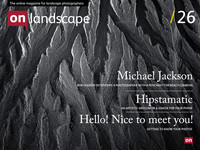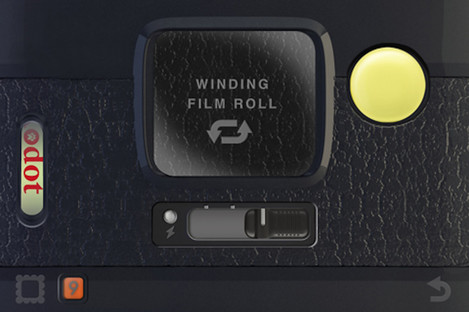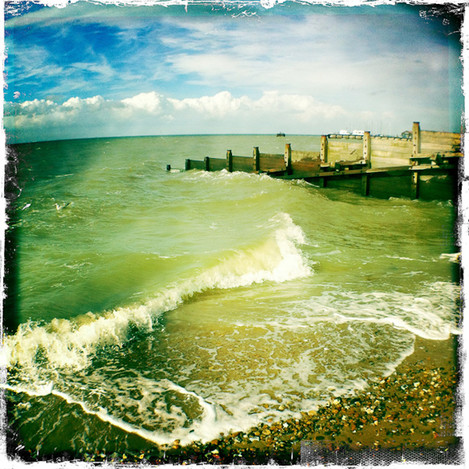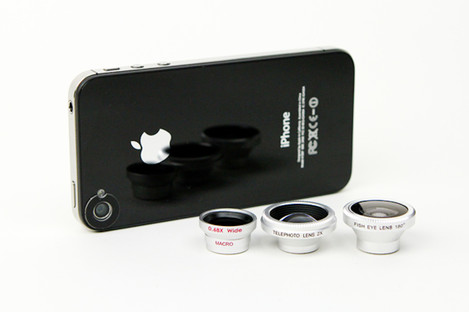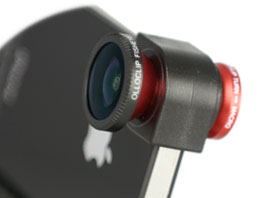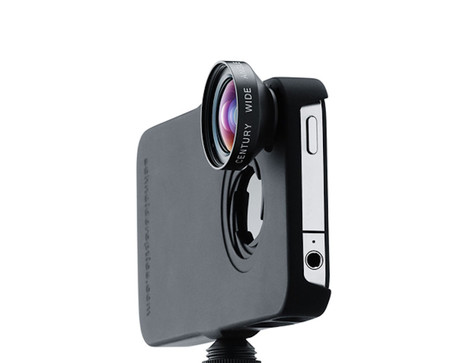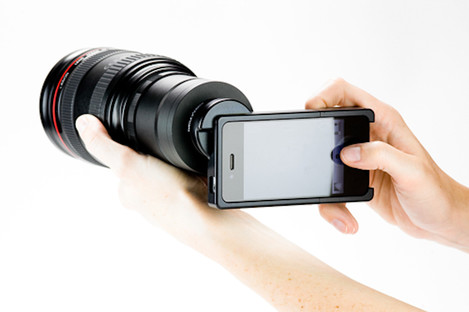Get the App - Get Hip

Richard Earney
Richard is a designer and abstract landscape photographer living in North London. He uses a variety of cameras and a scanner to create his imagery. He’s happiest outdoors enjoying the landscape, but also when striving to find the abstract and unusual that’s out there.
We live in era of amazing advances in camera technology. High resolution DSLR cameras are available to photographers at very affordable prices. 80 Megapixel camera backs are available for medium and large-format photographers and of course, there is still a dedicated band of 35mm, medium and large format film photographers all creating amazing work.
Yet, over the last few years there has been a resurgence of interest in cameras for whom the highest quality is not the only aesthetic; camera such as Holgas, Dianas, and Lomos, where the arty feel and unpredictable nature of the result is all part of the charm.
In the last 3 years a combination of the low-fi camera aesthetic mixed with digital capture has taken off to such an extent that a new style of capture is seen all over the place; iPhoneography.
The premier Apps in use for iPhoneography are Hipstamatic and Instagram. I will concentrate on Hipstamatic as it is a capture only tool; whereas with Instagram you can also post-process images you've shot to your camera roll and share them with your followers.
Hipstamatic was the most downloaded App from the Apple App Store in 2010 and it has probably done a large amount to drive the iPhone to become the most used camera on Flickr. It has been used in art projects and exhibitions, for rock band promotion and even war photography.
It aims to emulate old/toy and plastic cameras with a combination of 'Lenses', 'Films' and 'Flashes' some of which are free, and others which can be bought through In-App purchase. These are supplied in 'Paks' which are released on a regular basis. A 'HipstaPak' normally contains a lens, a film and either a Flash or a case. Other types of Paks are 'GoodPaks' which are released for a limited period, normally to support an event or cause. 'FreePaks' are as you'd expect free!
Descriptions of these Paks are written in cool, 'hipster' style and often obfuscate the actual effect of the item; sometimes the only way to see what a combination of film and lens can do is to try it. And that is where the fun starts.
And essentially Hipstamatic is a way to have fun with photography. If you are a photographer who tends to shoot in the early morning and late evening and you don't tend to shoot in bad weather then messing around with Hipstamatic can be a great way to extend your shooting time. If you are suffering from a creative block, then walking around the scene and trying something more casual can be very freeing.
On opening the app you are presented with a beautifully rendered interface of a cheap plastic camera, a small square viewfinder, a 'film' window, a Flash switch, some navigational buttons and a yellow shutter button. Tap the bottom right button to flip the camera to the front view and you see the lens you are using, the flash window and the 'rangefinder' window. There is a further set of navigation buttons which allow you to choose 'films', 'flashes', 'cases' and buy further items.
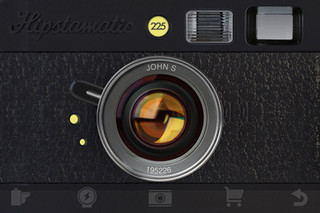 |
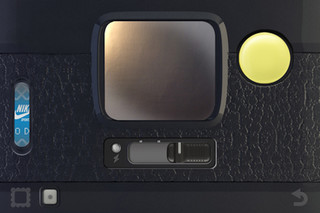 |
Left: The front view of the camera. The icons on the bottom show let you access, Films, Flashes, Cases, The Hipstamart and the rear of the camera. The lever next to the lens lets you change quality.
Right: The rear view of the camera. The film window, the normal viewfinder and shutter button, the Flash selector, the print window and the front of camera selector.
You can select a different lens by swiping on the selected lens. A lever next to the lens allows you to raise or lower the quality. Standard Quality is 600x600px , Medium Quality is 1200x1200px, and High Quality is 1936x1936px, so with the highest resolution you can comfortably make a large print. Indeed, you can order high quality prints up to 30" directly through the software. I have also printed them at home on an Epson Printer as a comparison with the first Hipstaprints I received, and a 300ppi print will print at 16cm and a 10cm print (the size of the ones I ordered) you end up with a 482ppi print. They looked really good too.
With the newly announced iPhone 4S, which now has an 8Mpx camera (3264x2448px), version 226 of the app has a High Quality setting of 2448x2448px.
There is much discussion online about how the iPhone 4S is being considered as a more than useful compact camera alternative for scouting. It is, for many, the camera you have with you most of the time. It probably still has some way to go quality-wise, but what you can get is very impressive (and every shot can be geo-located).
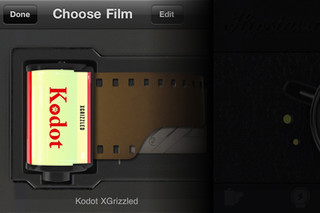 |
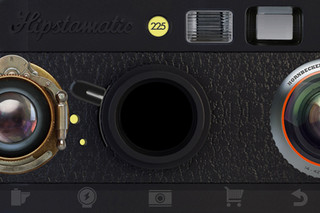 |
Left: Selecting a film. Edit allows you to choose to have your favourites at the top of the list.
Right: showing a lens being swapped by swiping on the current lens
Each 'film' has a look, which can equate to old film styles or processes,. They may be bordered in black, white, buff colour or display rough edges. Some of the films are colour, some black and white or nearly black and white. Some of the films contain information in the 'rebate' area
Lenses also have looks; some are clean and bright, others suffer from light leaks, or operate in small ranges of tones or apply special effects. Flashes too impart further colour casts to images. With the large number of combinations possible there are a myriad of effects you can get and at times the choices are overwhelming. On average it takes 10-20 seconds to select the various combinations you might want, unless you stick to a tried and trusted few. I tend to stick to a couple of films and lenses meaning that I spend less time fiddling to get the right result. With practice, you learn how your chosen combos react to different scenes and if you are creating a project you end up with a more coherent result by limiting the experimentation.
So when you finally come to shoot what can you expect? The answer is a square image that looks as though it could have come from a Holga with expired film, which may have been cross-processed and the film might even have been scratched.
If you have got this far you might well be horrified that this exists and wonder what the future of photography is coming to. Bear in mind that Hipstamatic is one of thousands of photography apps on the Apple App Store, and there are countless others on the Android App Store too, many of which distort and distress an image; some during shooting, some in post-production. This style of photography is very popular. But does it offer anything for a landscape photographer?
As I mentioned, it is a fun tool and one that can be used more casually when you are not shooting on your main camera, but it also imposes some discipline on the photographer. When you shoot a Hipstamatic it will take a minute or so to 'develop" the image. In the digital age of instant viewing this can seem an absolute age. If you shoot too rapidly then you can fill up the available memory (9 images) and you will be forced to wait for the 'film to wind'. The developers Synthetic Corp are working on their next app, which makes you shoot a whole roll of 24 shots before you can see your images. Imagine having to wait that long!
Above: 9 images have been shot, so the film has to be 'wound'
This does mean that you have to slow down a bit and think more about what you are shooting, which can only be a good thing! If you add a tripod mount (I use the Glif) and an adaptor for your tripod head, you have the slightly comical sight of your massive tripod and a small iPhone ready to take pictures, but with added stability. The app lacks a self-timer which would be useful for tripod work; it is a highly requested feature. With iOS 5 there is the option in the built-in camera to use your headphone remote as a shutter release. If this is opened up to all camera apps, then a remote release does exist.
Visualising how an image will look is as important, if not more important, in Hipstamatic than with a normal camera. Not only do you have the constraints of capturing the image you have seen, but you must also work out how that image will be translated by your Film and Lens combo in the app.
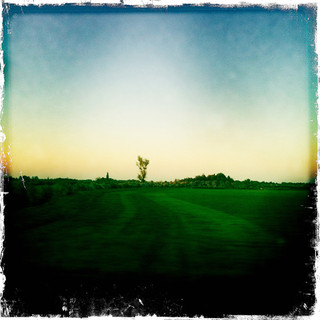 |
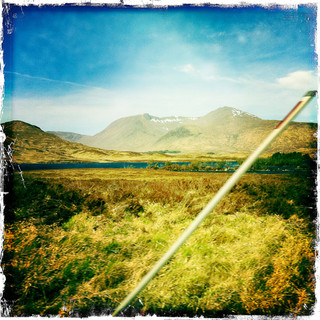 |
Above: From a Train Window. Lens: John S; Film: Kodot XGrizzled. On a train trip back from Edinburgh, I had been experimenting with shooting Hipstamatics out of the window. I had pre-visualised an open field with a solitary tree, and knew that my lens/film combo would work. The timing was essential, any telegraph poles or signs in the view at that speed would end up being distorted (as shown on the right)
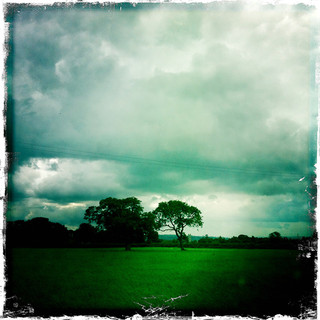 |
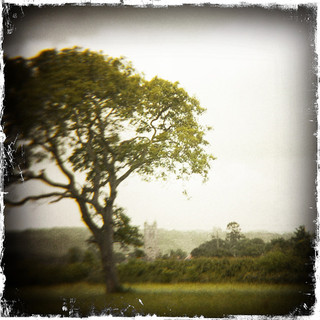 |
Above: Evercreech Church. On the left is a shot taken with the standard iPhone 4 lens, on the right using the Photojojo telephoto lens. There is a lot of blur and vignetting with this image as the case and lens mount didn't fit with other accessories I was using, but it shows the potential reach of the lens.
While a Hipstamatic works well for a conventional landscape view, the possibilities for more intimate landscapes are a strength of the app. Isolating subjects can produce rich and vivid imagery.
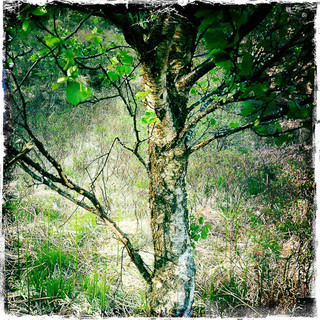 |
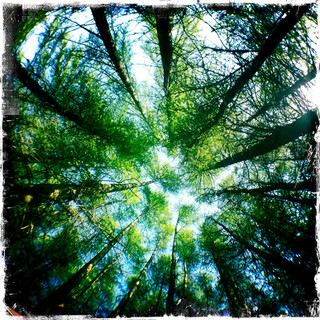 |
Above: Two more intimate landscapes
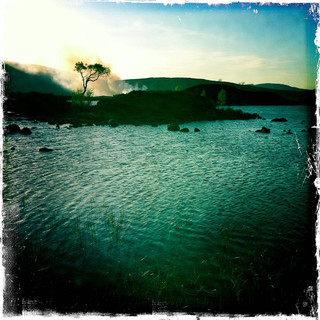 |
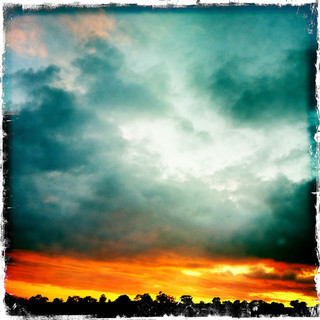 |
Left: The (in)famous tree at Loch Nah-Achlaise. At the end of April 2011, there were large numbers of peat fires on the Scottish moors, this one framed the tree, which has, of course, now disappeared.
Right: A fiery sunset. Evercreech.
Above: Whitstable, taken with a Photojojo wide-angle lens.
While on a photographic road trip to Scotland in April, my companions and I took a lot of Hipstamatics, so much so that we coined the phrase "Everything looks better with Hipstamatic". We were all rewarded with some lovely 'arty' images that could be created when moving between locations and in the middle of the day when we were taking a breather.
The photographer Kevin Cummins said in the Guardian, a few weeks ago, "It doesn't matter what camera you use. The connection with your subject is what's important." Practicing and developing your style can only increase your connection with the landscape. In the end shooting Hipstamatic landscapes is still about the same essential things as with any landscape photography 1) seeing the image 2) composition 3) choosing the right tool for the job (in this case your Film and Lens combination) 4) waiting for the light and if it is not quite right, persevere! But the very nature of the effects which get added can add texture to flatter images and give a landscape a unique personality.
Using Hipstamatic since it first appeared, has certainly made me appreciate square format photography again after many years of using a DSLR. When I was younger I had a Lubitel TLR, but never quite got on with it. Exploring the square format with the app; a visit to the National Media Museum for the Fay Godwin exhibition and a healthy injection of 'Mr Parkin's patented film tonic' in LandscapeGB has now led me to try the delights of a Mamiya C330.
Accessories
Lenses. The iPhone 4 lens and quality is pretty good, the iPhone 4S lens is even better, but sometimes you might want to change your field of view. A number of enterprising manufacturers have produced lens adaptors for the iPhone.
Photojojo stocks a set of Telephoto (2x), Wideangle (0.68x), Macro and Fisheye (0.28x) lenses which attach magnetically http://photojojo.com/store/awesomeness/cell-phone-lenses/ . They also stock an 8x Telephoto lens as well http://photojojo.com/store/awesomeness/iphone-telephoto-lens/.
Olloclip produce a similar set of Wide, Macro and Fisheye lenses, which clip over the phone (which has proven to be a better solution than the Photojojo lenses).
You can also get Schneider Optics lenses for the iPhone, which should alleviate any concerns about quality!
Finally there is even an adaptor to use your Nikon or Canon DSLR Lenses on the iPhone. Even to me this is slightly mind boggling, so I had to order one!! However, I wouldn't recommend it having used it as there are too many flaws (as perhaps was predictable!)
There are many tripods and tripod adaptors for iPhones, I have mentioned The Glif, which you can place on your normal tripod with an adaptor. There are other variations of that and then there are custom camera phone tripods.
Other Apps.
If you still don't like the idea of looks being added to images with little control then there are a multitude of other camera apps on the App Store. Camera+ has a good reputation, with many extra features over the built-in camera, such as Image Stabilisation, Timer, Burst Mode (it also has Looks which can be added post shoot).
For more of a purist approach there is 6x6 by Michael Hardaker, which presents the user with a 2 1/4 square view with very few bells and whistles - colour or black and white; flash on or off. You can touch for focus and exposure and lock those on screen, you can even reverse the view so you can imagine it is a TLR view. He has more recently released 6x7, which offers another classic image format in an app.

